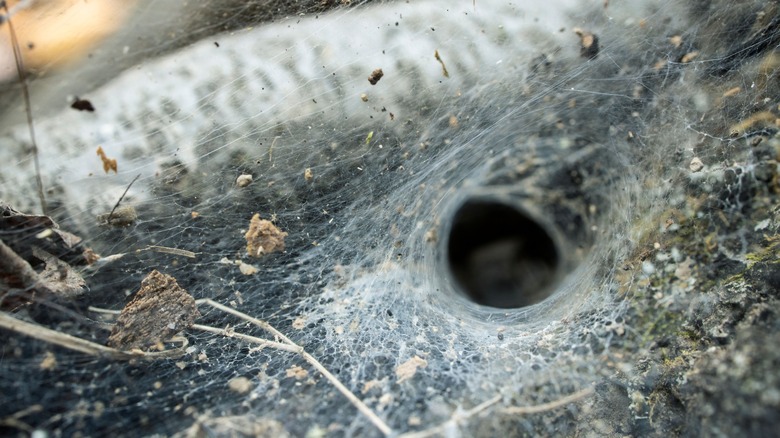In the waning days of summer, nature’s tapestry is adorned with the intricate creations of both funnel weaver spiders and webworms (although the latter are nuisance pests). Late summer becomes a canvas where these arachnids and moth larvae showcase their web-weaving prowess. The challenge lies in distinguishing between the delicate architectures of these two entities, a task that proves elusive for many. The confusion over these webs is not merely a matter of curiosity; it carries practical consequences for pest control. And to clue you into being able to tell the difference, the secret is in the structure or formation of the webs and, of course, the inhabitants — things you won’t miss if you look closely enough.
Late summer is a critical time for pest control, making it essential for homeowners to adeptly recognize the subtle disparities between funnel weaver spider webs and those crafted by webworms. Mistaken identity can lead to misguided interventions, potentially disrupting the delicate ecological balance of your garden. This article seeks to unravel the mystery behind these webs, offering insights that’ll empower you to make an informed decision about pest management in your outdoor space.
Funnel weaver spiders as garden heroes

Funnel weaver spiders, also known as grass spiders, are marvelous natural web architects. Typically found in late summer, these arachnids weave distinctive webs close to the ground. Unlike the expansive and chaotic webs of webworms, funnel weaver webs are characterized by a flat sheet with a tubular retreat at one end. This retreat serves as a shelter and ambush point for the spider — creating a clever combination of a hunting ground and a fortress.
These spiders are beneficial for gardens, preying on a variety of harmful insects. Commonly residing in quiet, undisturbed corners, they contribute to natural pest control without causing harm to plants. Recognizing the habitat and habits of funnel weaver spiders not only aids in appreciating their role in the ecosystem but also guides homeowners in distinguishing them from potentially harmful pests. Being aware of these nuances is the first step toward creating a pest management strategy that is both effective and environmentally conscious.
Webworms as unwanted garden intruders
On the flip side, webworms are unwelcome guests in gardens, although they don’t usually pose a threat to plant life. These larvae, often mistaken for caterpillars, weave unsightly webs around foliage. Unlike the strategic architecture of funnel weaver webs, webworm webs are messy and irregular, enveloping leaves and branches. In fact, the University of Arkansas System Division of Agriculture talks about how the “frass from all of the feedings remains in the thick web and becomes piteously ugly.”
Webworms are the larvae of different moth species and are voracious feeders — causing defoliation and aesthetic damage to ornamental plants and trees. Recognizing their physical appearance, the type of webs they build, and understanding their lifecycle are essential for effective control measures. Removing webworms manually or introducing natural predators like birds and beneficial insects (e.g., lacewings and certain spiders) can help maintain a healthy garden ecosystem, minimizing the impact of these unwanted visitors. With awareness and accurate information about funnel weavers and webworms, homeowners are empowered to protect their gardens without causing unnecessary harm to good insects.